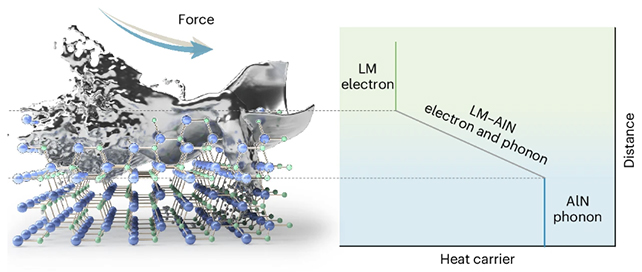Assembly the world’s knowledge storage calls for is expensive, by way of cash, power, and environmental influence – however a brand new materials may considerably enhance the cooling of our knowledge facilities whereas additionally making our house and enterprise electronics extra power environment friendly.
At present, cumbersome and energy-intensive cooling options are sometimes deployed to relax out the {hardware} holding our knowledge, including as much as about 40 % of total knowledge middle power use (round 8 terawatt-hours yearly).
The group from the College of Texas at Austin and Sichuan College in China estimates round 13 % of these 8 terawatt-hours could possibly be shaved off by their new natural thermal interface materials (TIM).
The TIM considerably boosts the speed at which warmth could be taken away from energetic digital elements and channeled right into a heatsink for air or water to hold away.
That in flip means a decrease demand on energetic cooling applied sciences, together with followers and liquid cooling.
“The facility consumption of cooling infrastructure for energy-intensive knowledge facilities and different massive digital programs is skyrocketing,” says supplies scientist Guihua Yu, from the College of Texas at Austin.
“That development is not dissipating anytime quickly, so it is vital to develop new methods, like the fabric we have created, for environment friendly and sustainable cooling of units working at kilowatt ranges and even increased energy.”
The TIM developed here’s a colloidal combination of the liquid steel galinstan and particles of aluminum nitride, mixed in a approach that creates a gradient interface – one which helps warmth move via with none exhausting boundaries between the 2 substances.

In an experimental lab check setup, the TIM was capable of double the quantity of warmth that could possibly be safely transferred away from each sq. centimeter of an digital part, in comparison with a number one thermal paste – whereas additionally lowering the part’s total temperature.
The setup used a cooling pump, which is a standard safety towards overheating, and the TIM minimize the power use of the pump by 65 %. This was solely a small-scale instance, nevertheless it exhibits the heat-transferring potential of the fabric.
“This breakthrough brings us nearer to reaching the best efficiency predicted by idea, enabling extra sustainable cooling options for high-power electronics,” says Kai Wu, from Sichuan College.
The following step is to get the fabric engaged on bigger programs and in a greater variety of eventualities, one thing the researchers are already within the technique of doing by partnering up with knowledge middle suppliers.
Analysts count on knowledge middle electrical energy utilization in 2028 to be double what it was in 2023, pushed largely by the rising calls for of synthetic intelligence fashions. That presents an actual power demand drawback – one which scientists are working exhausting to unravel.
“Our materials can allow sustainable cooling in energy-intensive functions, from knowledge facilities to aerospace, paving the best way for extra environment friendly and eco-friendly applied sciences,” says Wu.
The analysis has been printed in Nature Nanotechnology.





